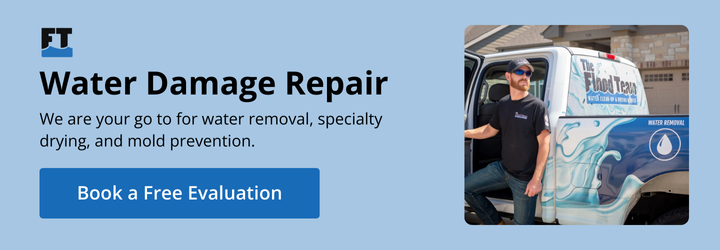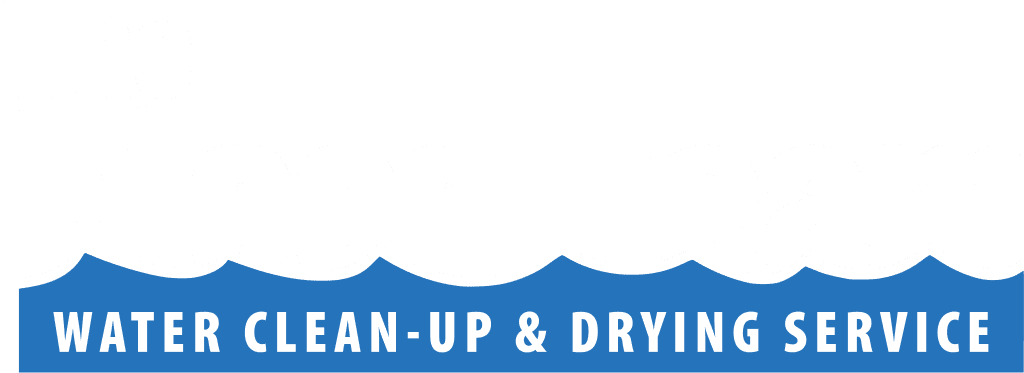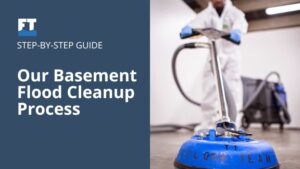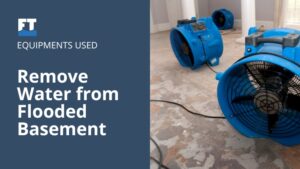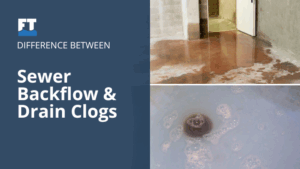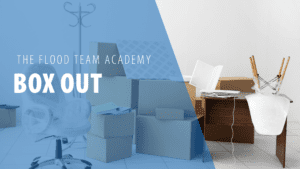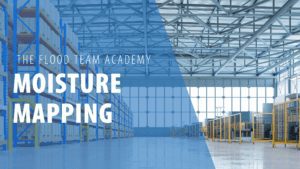Water damage & flooding doesn’t work around your schedule. It strikes unexpectedly and can cause severe damage if not dealt with promptly & professionally. But where do you even start when water hits? Personally, we think The Flood Team should be your first and last place to go for all your water damage restoration needs. When disaster strikes, give us a call to schedule your FREE water damage evaluation. From that point on, you won’t have to worry about anything except getting your life back to normal. Keep reading to find out what to expect in our water mitigation process.
1. Inspection/Assessment
Once The Flood Team arrives at your home for your assessment, the first thing we’ll do is inspect the home and evaluate the damage. In order to properly evaluate the damage, we’ll have special tools and instruments we use to measure the moisture content of the home. To do this, we’ll either poke or rest the instruments on top of surfaces like floors, baseboards, and ceilings in the damaged rooms to get an accurate reading. Depending on the moisture content readings and Institution of Inspection Cleaning and Restoration Certification (IICRC) dry standards for Missouri, we’ll assess what kind of drying equipment is needed. At the end of this inspection, we’ll provide you with a FREE, no obligation quote of our scope of work.
2. Prevent further damage
The longer water damage sits untreated, the more likely it is that additional damage can occur. Once you’ve identified that your home or business has been affected & contacted our team, we’ll move as quickly as possible to stop the source of the leak (if applicable) and get to work on restoring your property. If it’s determined that drying equipment is needed, dehumidifiers will often be placed in the home to prevent against further damage like mold growth. Low Grain Refrigerant Dehumidifiers can be present for one or multiple days depending on factors such as the length of time the water has been present, source of the leak and the building materials that have been affected. Our team of IICRC-certified technicians will be able to assess how long the dehumidifiers are needed.
3. Removal of standing water
Removing any standing water from your home or business is at the very top of our priorities list when we start a job. The removal process is actually much less complicated than some may think. We use state-of-the-art extraction equipment and can remove up to 98% of the water out of a 100% saturated carpet and pad. that’s present in the area. The amount of time this phase takes varies depending on the type of substrate that’s being dried, the size of the room and the total amount of water that’s present.
4. Changes in color and/or texture of surfaces
Once any standing water has been removed, it’s time to start drying out your property. We’ll start by bringing in different types of air movers (think of these like glorified fans) to help circulate airflow throughout the room. Don’t be surprised if we need to lift up a section of the carpet or position one of the air movers at certain sections of the walls to ensure air is getting to the most saturated parts of the room. If you have hardwood floors, we may also use floor mats which help draw the water out that was trapped underneath the floor.
5. Containment of damage
The containment and drying phases happen simultaneously. While drying out the home, wet areas are taped off in order to concentrate the heat and dry air to the rooms that need to be dried out. Containment is critical as it enables our crew to maintain the environment of the room and dry the home as quickly and efficiently as possible.
6. Monitoring
Throughout the drying process, we will stop by periodically to monitor how the drying is progressing. Specifically, we monitor the dehumidifiers’ intake and output temperatures and humidity levels to make sure the dehumidifiers aren’t putting wet air out into the room. They’ll also go back and take readings of the same surfaces they did during the inspection phase. As rooms are declared dry, crews will often move equipment around to other areas of the home that are still wet.
7. Completion
Once your property has been returned to its previous dry state, the water damage cleanup process is considered complete. At this point, the drying equipment will be removed from the home. However, your satisfaction is always our #1 priority & we guarantee no project is finished until you sign off on it!
From water damage to flooded basements to sewer cleanup, The Flood Team is your one-stop-shop for 24/7 water restoration services. We’re always ready and equipped to help you get your home back in order. The longer water damage sits untouched, the greater the deterioration of your home and belongings will be. Contact us 24/7 for any kind of basement flood cleanup. We’ll respond immediately & schedule a time for our IICRC-certified technicians to come assess your damages FOR FREE. Call us at 314-310-3064 or visit us online at thefloodteam.fly.
